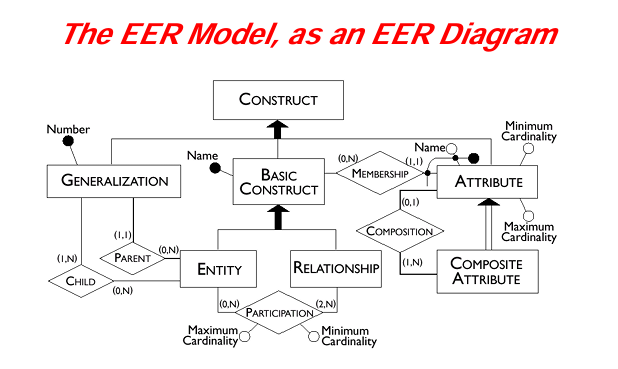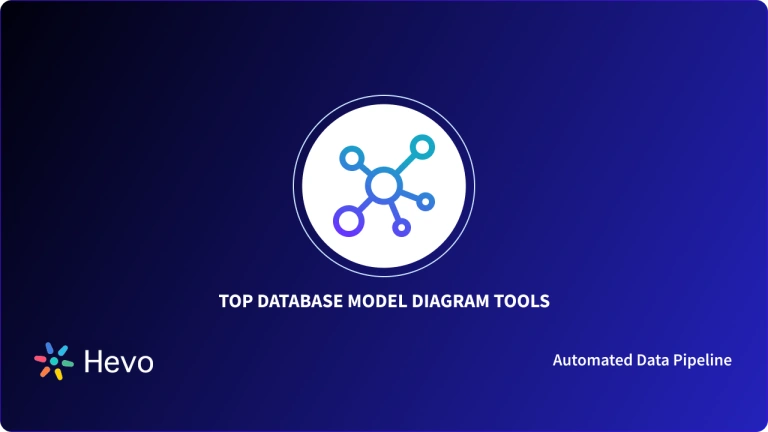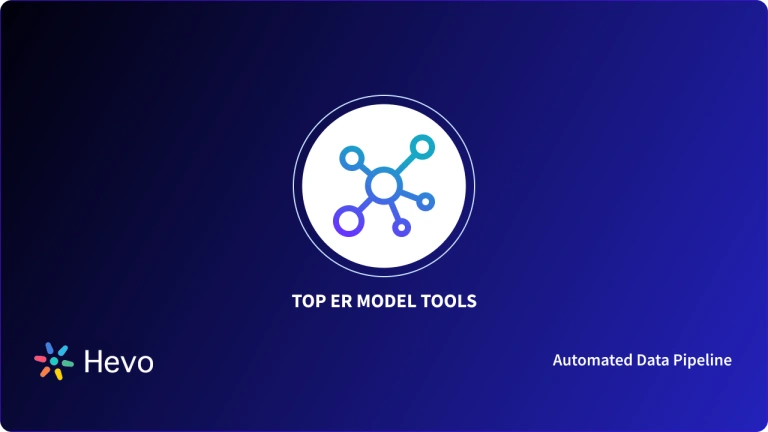Today, with the increase in the production of data, the complexity associated with data has also increased multifold. As a result, it becomes more and more difficult to use the traditional Entity-Relationship model for database modeling. To reduce this complexity of modeling there arose a need to make improvements and enhancements to the existing Entity-Relationship model to make it able to handle the complexity of modeling & application in a better way. This is where the concept of Enhanced ER Models comes into the picture.
In this article, you will gain information about Enhanced ER Models. You will also gain a holistic understanding of the difference between ER and Enhanced ER Models, the advantages & limitations of EER Models, and the different techniques associated with them.
Read along to find out in-depth information about Enhanced ER Models.
Table of Contents
What is an Enhanced ER Model (EER)?
Enhanced ER models are advanced database diagrams that are very similar to regular ER diagrams which represent the requirements and complexities of complex databases. In a nutshell, it is a hybrid of ER models with some additional complexities.
The Enhanced ER Diagram is a diagrammatic technique used to represent Enhanced ER Models. They show Sub Class and Super Class, Specialization and Generalization, Union or Category, Aggregation, and so on.
For Example, The following “sub-class” relationships. There are three types of employees here: Secretary, Technician, and Engineer. Employee is the super-class of the other three sets of individual sub-classes, each of which is a subset of the Employee set.
Learn about the best ER Model tools from Hevo’s resources for your needs.
What is the Difference between ER & Enhanced ER Models?
An Entity-Relationship (ER) diagram is a visual representation of data based on the ER model that describes how entities in the database are related to one another. It is most commonly used in database or information system organizations.
Whereas, Enhanced Entity-relationship (EER) Models are essentially expanded upon ER Models. Enhanced ER models are useful tools for creating high-level models for databases. With their improved features, you can plan databases more thoroughly by delving deeper into the properties and constraints.
An Enhanced ER diagram includes all of the elements of an ER diagram as well as the following:
- Inheritance of attributes or relationships
- Categories or union types
- Generalization and Specialization
- Superclasses and Subclasses
An EER diagram expands on an ER diagram by including elements that allow for aggregation, generalization, and specialization.
Advantages of Enhanced ER Models in DBMS
The advantages of Enhanced ER Models are as follows:
- It is quite simple to develop and maintain. In addition to this, it is easy to understand and interpret as well, technically speaking.
- Everything that is visually represented is easier to understand and maintain, and the same goes for Enhanced ER models. It has been an efficient tool for database designers.
- Moreover, Enhanced ER Model serves as a communication tool and helps display the relationship between entities.
- You can always convert the Enhanced ER model into a table. Thus, it can easily be integrated into a relational model.
Limitations of Enhanced ER Models in DBMS
The limitations of Enhanced ER Models are as follows:
- The Pareto Chart cannot be applied to all issues.
- Faults in data scoring are possible. There may also be instances of errors in the application.
Designing Enhanced ER Diagrams provides a clear blueprint for complex data relationships, but implementing them efficiently at scale can be challenging. Hevo’s automated, no-code platform makes it effortless to ingest, transform, and replicate data modeled with EER concepts.
What makes Hevo perfect for managing EER-modeled data?
- Automate Data Extraction: Effortlessly pull data from various sources and destinations with 150+ pre-built connectors.
- Transform Data effortlessly: Use Hevo’s drag-and-drop feature to transform data with just a few clicks.
- Seamless Data Loading: Quickly load your transformed data into your desired destinations, such as BigQuery.
- Transparent Pricing: Hevo offers transparent pricing with no hidden fees, allowing you to budget effectively while scaling your data integration needs.
Try Hevo and join a growing community of 2000+ data professionals who rely on us for seamless and efficient migrations.
Sign up here for a 14-day free trial!4 Diagrammatic Techniques Utilized in Enhanced ER Models
The concepts and techniques that are used in the design of Enhanced ER Models are as follows:
1) Superclass and Subclass

A superclass is a high-level entity that can be further segmented into subclasses or subsets. It is also referred to as a Parent class. For example, if Shape is considered an entity, then a Square, Circle, and Triangle are possible subclasses. A subclass can be referred to as a child or derived class. In this case, Shape is the superclass.
2) Specialization and Generalization
A) Specialization
The Enhanced ER model was designed in a top-to-bottom approach using Specialization. The superclass or parent entity is defined first in this model by using a rectangular box. Then it is subdivided into similar entity types known as subclasses. Enhanced ER models are in expanded form.
Consider the following data handling scenario for an automobile company. Vehicle is the company’s primary entity, also known as the superclass. Color, Type, Engine capacity, and so on are all attributes of the superclass. Vehicle is further subdivided into subclasses such as Scooter, Car, and Truck. Each subclass inherits all of the attributes of the superclass. Apart from inherited attributes, a subclass can have its own attributes as well.
The Enhanced ER Model for the company is:

The Enhanced ER diagram in this approach has a relationship D at the junction of the superclass and the subclasses. Every subclass is a subset of the superclass. If all of the subclasses are disjoint, then D is used for the junction; otherwise, O is used.
B) Generalization
The process of extracting the common attributes or properties of entities (subclasses) to sum up and form a superclass is known as Generalization. It is a reverse Specialisation method which means it follows the bottom-up approach. It is an approach to high-level database management systems that focuses on core values and principles.

The Scooter, Car, and Truck are the primary entities in the Enhanced ER diagram. They can include attributes such as registration fees, license tenure, fitness data, and so on, and serve as subclasses for both Private and Commercial vehicle superclasses. The attributes belong to the subclasses Scooter, Car, and Truck, and they are included in the respective superclass because they are common. This process of taking the common attributes and reaching the primary root is known as Generalization.
The superclass, as shown in the EER diagram, is a subclass of the super-superclass RTO. This process can be expanded and divided based on the requirements.
3) Category or Union
A Category or Union represents a single super-class or sub-class relationship with multiple super-classes. Participation can be total or partial. In simpler terms, it represents an “either” type of relationship.
For example, The Car Owner in the Car booking model can be a Person, a bank, or a company.
The Owner (category- subclass) is the union of the three superclasses Company, Bank, and Person. A member of a Category must exist in at least one of its superclasses.

4) Aggregation
Aggregation is a high-level data modeling technique that leverages both Specialization and Generalization. It is commonly used to connect different entity types on the basis of a common relationship. This concept is generally used to depict the operational line, execution elements, or functional behavior of a similar type in terms of common attributes.
For example, in a school, both Teachers and Students are involved in learning, as demonstrated by:

In this case, two entities, Teachers and Students are aggregated to form a new entity. In simple terms, the relationship between Teachers and Students is considered a single entity.
This technique simplifies Enhanced ER models for analysis and other purposes.
The EER Model, as an EER Diagram

To illustrate the above diagram, you can consider the following example:
Create a database for a company that provides training. This necessitates the storage of information about the trainees and instructors. For each course participant (approximately 5,000), you must store their social security number, surname, age, gender, place of birth, employer’s name, address, and telephone number, previous employers (and periods employed), courses taken (approximately 200 courses), and final assessment for each course. You must also reflect on the seminars that each participant is currently attending, as well as the locations and times of the classes for each day.
Each course has a code and a title, and any course can be given multiple times. Every time a specific course is taught, it is referred to as an ‘edition’ of the course. You represent the start date, end date, and the number of participants for each edition.
If a trainee is self-employed, you must recognize their area of expertise and, if applicable, their title. You must save the level and position held by someone who works for a company. You will list the surname, age, place of birth, edition of the course taught, previous courses taught, and courses that the tutor is qualified to teach for each instructor (approximately 300). The phone numbers of all the instructors are also saved. An instructor can work for a training company full-time or as a freelancer.
Based on the given example, the final Enhanced ER Model is as follows:

Learn more about MongoDB Schema Designer and see how schema is designed in NoSQL databases.
Conclusion
In this article, you have learned about Enhanced ER Models. This article also provided information on the difference between ER and Enhanced ER Models, the advantages & limitations of EER Models, and the different techniques associated with them.
Hevo Data, a No-code Data Pipeline provides you with a consistent and reliable solution to manage data transfer between a variety of sources and a wide variety of Desired Destinations with a few clicks.
Hevo Data with its strong integration with 150+ Data Sources (including 60+ Free Sources) allows you to not only export data from your desired data sources & load it to the destination of your choice but also transform & enrich your data to make it analysis-ready. Hevo also allows integrating data from non-native sources using Hevo’s in-built REST API & Webhooks Connector. You can then focus on your key business needs and perform insightful analysis using BI tools.
Want to give Hevo a try? Sign Up for a 14-day free trial and experience the feature-rich Hevo suite first hand. You may also have a look at the amazing price, which will assist you in selecting the best plan for your requirements.
Share your experience of understanding the Enhanced ER Models in the comment section below! We would love to hear your thoughts.
FAQs
1. What is enhanced er modelling?
Enhanced ER (EER) modeling is an extension of the basic Entity-Relationship (ER) model that incorporates advanced concepts like specialization, generalization, and categories. It allows for more precise representation of complex data structures and relationships in a database.
2. What is the enhanced version of the ER model *?
The enhanced version of the ER model is the Enhanced Entity-Relationship (EER) model. It builds on the basic ER model by adding features like inheritance, specialization, generalization, and categories, enabling better representation of complex real-world data.
3. What is the difference between ERD and enhanced erd?
The primary difference between an ERD (Entity-Relationship Diagram) and an Enhanced ERD (EERD) is in complexity and features. While an ERD represents basic entities, attributes, and relationships, an EERD extends this with advanced concepts like specialization, generalization, inheritance, and categories for modeling more complex data relationships.
4. What is an example of EER?
An example of Enhanced Entity-Relationship (EER) modeling is a university database where “Person” is a general entity, and “Student” and “Professor” are specialized entities. Specialization allows “Student” to have unique attributes like “Major,” while “Professor” has “Department,” reflecting real-world hierarchies.




